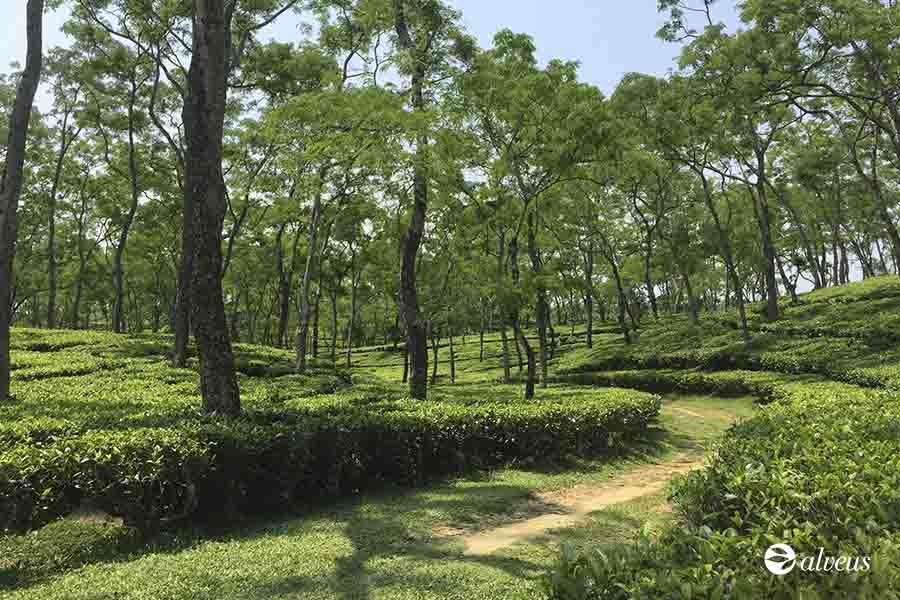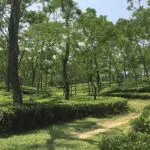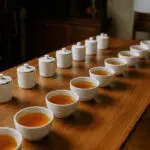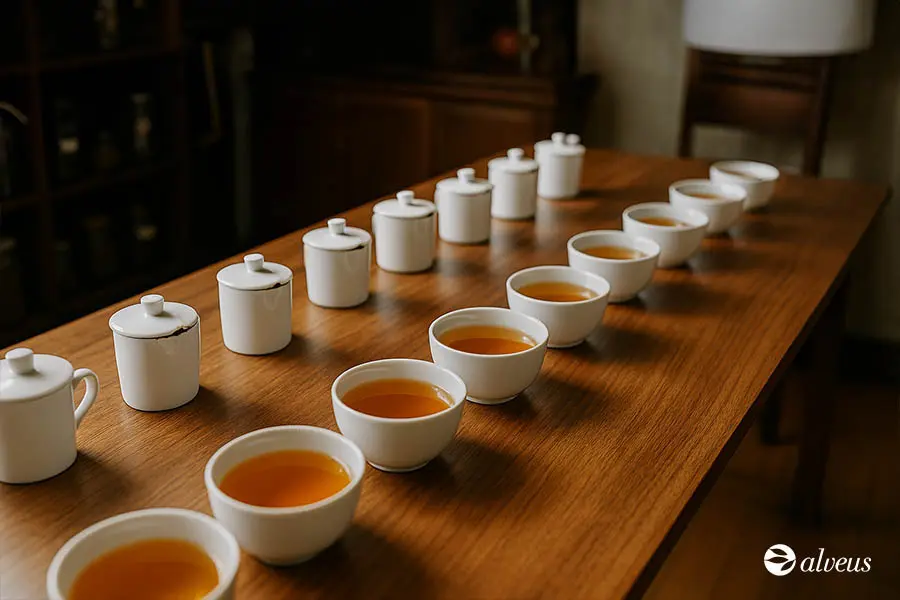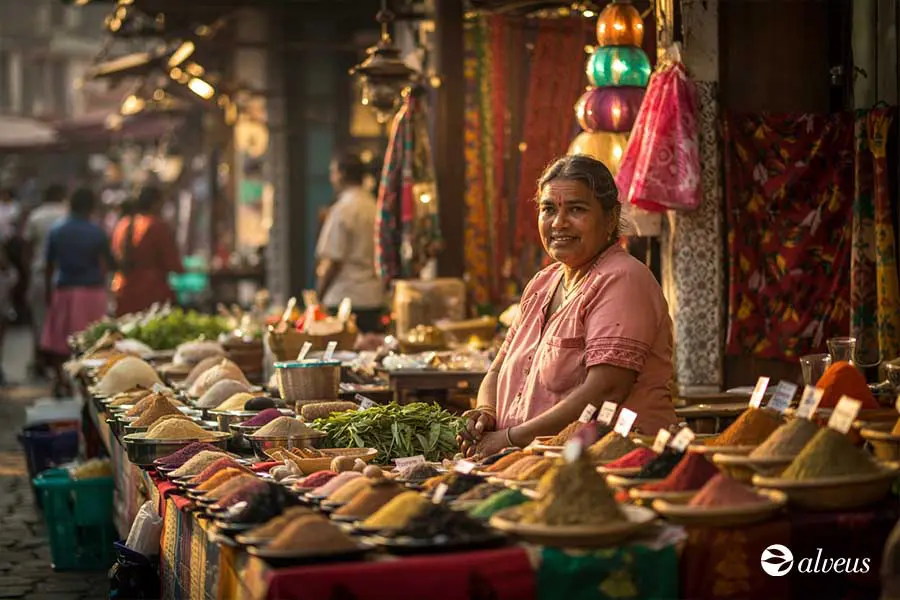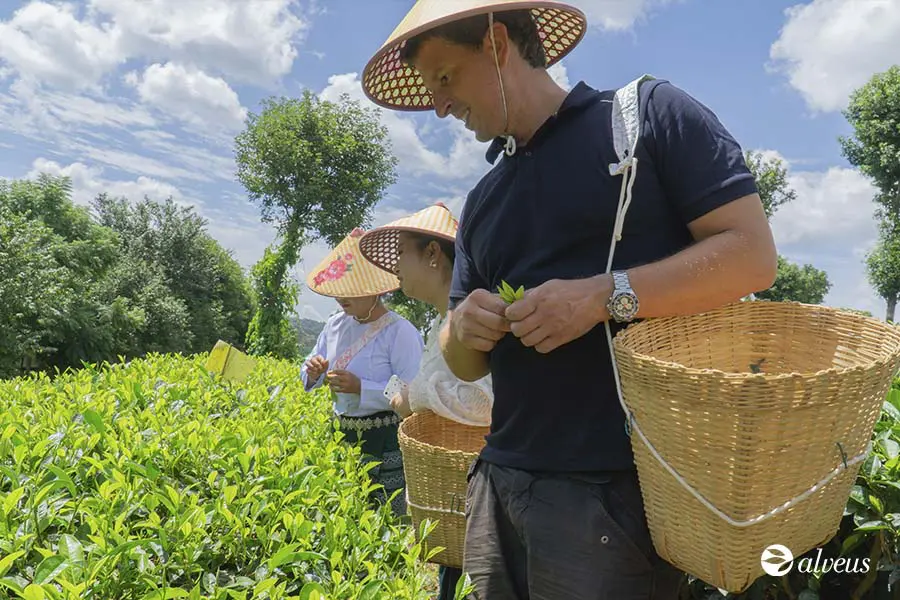Assam tea is one of the most recognised and valued varieties of black tea in the world. Its robust profile, intense colour, and characteristic malty flavour make it a popular choice among tea enthusiasts and specialised businesses.
This variety of tea is made from the Camellia sinensis var. assamica plant, which differs from the var. sinensis found in regions like China and Darjeeling. Assam is also known for being a key ingredient in many tea blends, such as Irish and English Breakfast.
In this post, we explore the characteristics that make Assam tea one of the most appreciated varieties globally.
The Origins of Assam Black Tea
Although China is considered the birthplace of tea, Assam (India) is one of the few regions worldwide where a native variety of the tea plant grows wild before being cultivated on a large scale.
In 1823, British trader Robert Bruce discovered that the local tribes in Assam, such as the Singhpo, consumed infusions made from the leaves of a shrub different from the Chinese tea variety.
During British colonisation, the Assam Company was founded in 1839 to reduce dependency on Chinese tea. By the late 19th century, Assam had become one of the world’s most significant tea-producing regions.
Today, Assam remains a global powerhouse in tea production, with thousands of active tea gardens and an auction system in Guwahati that regulates its global trade.
Where is Assam Tea from?
Assam tea originates from the Assam region, located in the Brahmaputra River Valley in northeastern India. This area is unique because, unlike other teas grown in mountainous regions, Assam tea grows in lowland areas, at sea level or close to it.
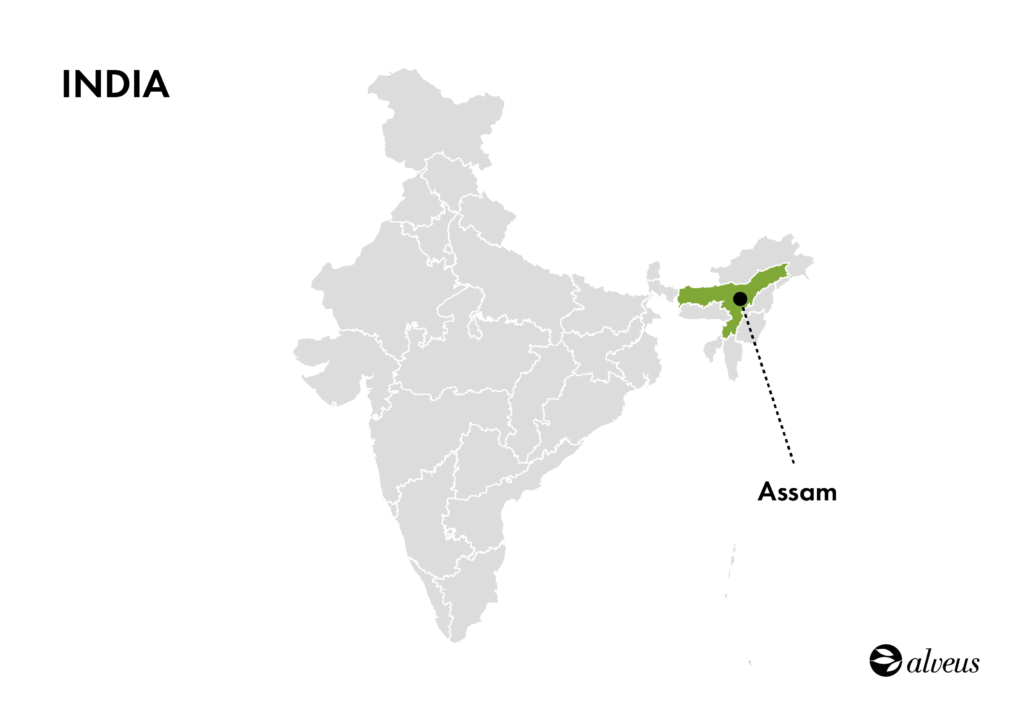
The Assam region is known for its tropical climate, with warm summers and heavy monsoon rains, creating ideal conditions for tea cultivation. Some of the most prominent areas include:
- South Bank of the Brahmaputra (Golaghat – Dibrugarh): Known for its rich alluvial soils, this area is perfect for producing full-bodied teas. Notable gardens here include Sibsagar, Tinsukia, Dibrugarh, and Tringri.
- Moran Circle: Famous for the consistency and quality of its teas, gardens such as Doomur Dullung, Hajua, Mohokutie, and Thowra are known for producing well-balanced teas with excellent flavour and structure.
- North Bank of the Brahmaputra (Mangaldai and surrounding areas): This more remote region has fertile soils that support high-quality tea production. However, gardens here face challenges like elephants crossing the area, which can affect tea production and harvesting.
Assam is one of the world’s largest tea-producing regions, contributing significantly to its global relevance. Each year, Assam’s tea gardens produce millions of kilos of tea, which are exported and consumed worldwide.
The Flavour of Assam Tea
Assam tea is known for its bold, robust, and malty flavour, ideal for those who prefer a strong brew, especially in breakfast blends.
Its rapid growth, favoured by the tropical climate and monsoon rains, accelerates plant growth, which intensifies the concentration of compounds responsible for its distinctive aroma and flavour. Additionally, the oxidation process adds freshness and a light astringency.
Types of Assam Tea
Assam tea is produced using two main methods: the CTC (Crush, Tear, Curl) method and the Orthodox method, each with distinct characteristics and processing procedures.
Harvesting also plays a key role in the quality and profile of the tea, with the First Flush and Second Flush being the most important.
CTC Assam Tea
This is the most commonly used type for tea bags and commercial blends.
During the CTC process, the leaves are crushed and rolled at high speed, resulting in small tea pieces. This method maximises flavour extraction during brewing, offering a strong and full-bodied brew, ideal for those who prefer a more intense tea with a simpler profile.
CTC Assam teas are usually quicker to prepare and, due to their concentrated nature, are excellent for mixing with milk and sugar.
Orthodox Assam Tea
This traditional method involves gently rolling the tea leaves by hand or with low-impact machines, preserving their original shape and offering a more delicate processing.
Orthodox tea yields a higher quality brew with a more complex flavour and subtle nuances. The tea leaves tend to be larger and longer, resulting in a more aromatic and smooth infusion compared to CTC teas.
This type preserves the essential oils and aromatic compounds that define Assam’s unique flavour.

*Comparison between Assam BOP Second Flush Rembeng BIO and Assam FTGFOP 1 Mangalam teas, both available on our Alveus B2B website.
If you want to learn more about the black tea production process, check out this other article from our blog, where we detail all its stages.
By Harvest Season
First Flush
The first flush occurs in late March or early April when the tea leaves are younger and fresher. The resulting infusion is generally lighter and smoother.
While not as intense as later flushes, the first flush is highly valued for its freshness and delicate floral and vegetal notes, with lower astringency.
Second Flush
The second flush takes place between May and June and is generally the most prized by tea lovers due to its more intense flavour.
The second flush Assam is considered superior for its full-bodied flavour and balanced taste, with less astringency than the first flush, making it ideal for a longer-lasting infusion.
In our online catalogue, you will find the Assam TGFOP Second Flush Rembeng BIO, a premium second flush variety.
Popular Blends with Assam Tea
Thanks to its strong, full-bodied flavor, Assam tea is a key base in many classic black tea blends. Its richness and adaptability make it an ideal choice to combine with other teas and flavours.
Some of the most famous blends featuring Assam tea include:
- English Breakfast: One of the most globally recognised blends. It usually combines Assam tea with Ceylon and Kenyan teas, creating a robust brew that is ideal for serving with milk.
In our B2B store, you’ll find a carefully selected range of English Breakfast blends featuring Assam tea, perfect for offering to your customers.
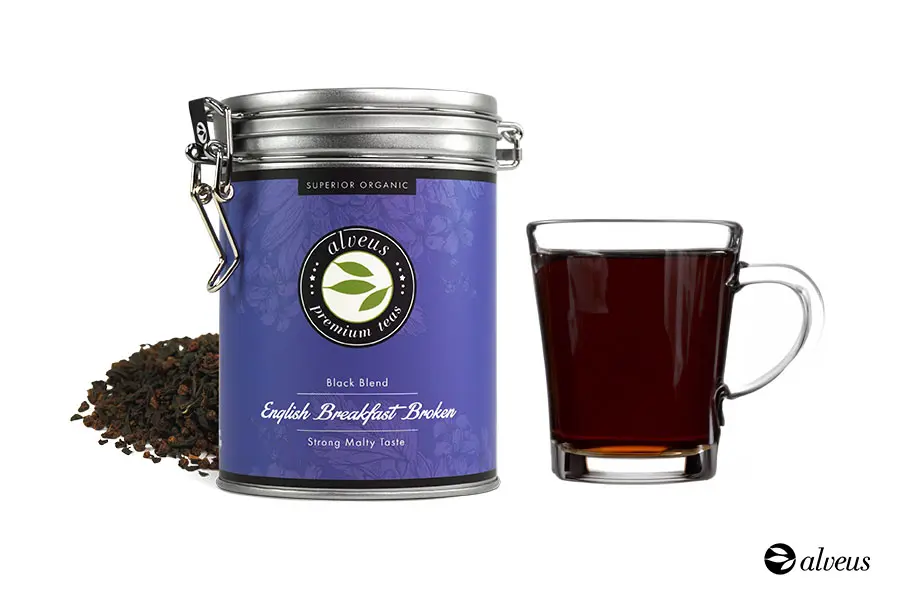
- Irish Breakfast: Similar to English Breakfast, but with a higher proportion of Assam tea, which gives it a stronger flavour. Add the authentic taste of this blend to your catalogue with our Irish Breakfast tea available in bulk from our online Alveus store.
- Masala Chai: Popular in India, this blend combines Assam tea with spices such as cardamom, cinnamon, ginger, and cloves, often served with milk and sugar.
- Russian Caravan: A historic blend combining Assam with smoked teas like Lapsang Souchong and Oolong, offering a complex and deep flavour profile. In our online store, you can purchase our Russian Caravan Bio in bulk, a sophisticated and balanced blend.
- Scottish Breakfast: Stronger and earthier than the English Breakfast, it often uses a higher amount of Assam and other intense varieties.
What differentiates Assam tea from other black teas?
Assam tea is frequently compared to other black tea varieties, especially Darjeeling and Ceylon. While all are black teas, they show notable differences in flavour, body, and consumer profile.
Assam vs Darjeeling
Both originate in India, but while Darjeeling grows in the highlands of the Himalayas and is light, floral, with muscatel grape notes, Assam, grown at sea level, is more robust with earthy undertones.
Darjeeling is best enjoyed on its own, while Assam is ideal for blends and pairs well with milk.
Assam vs Ceylon
Ceylon tea (Sri Lanka) has a more citrusy and astringent profile compared to Assam’s round and malty body.
While Assam offers an intense and rich infusion, Ceylon is brighter and more refreshing, making it popular in iced teas and fruity blends.
Conclusion and Outlook for Assam Tea
Assam tea remains one of the most valued and appreciated varieties worldwide. With production ranging from high-volume teas to premium varieties, Assam continues to be a cornerstone of the global tea market.
Today, Assam tea is essential in blends like English Breakfast and Irish Breakfast, and its growing presence in the organic tea market demonstrates its adaptability to current trends.
For tea professionals, Assam remains a safe bet, with constant demand in both traditional and emerging markets. Its quality and versatility ensure its position as one of the pillars of black tea worldwide.


